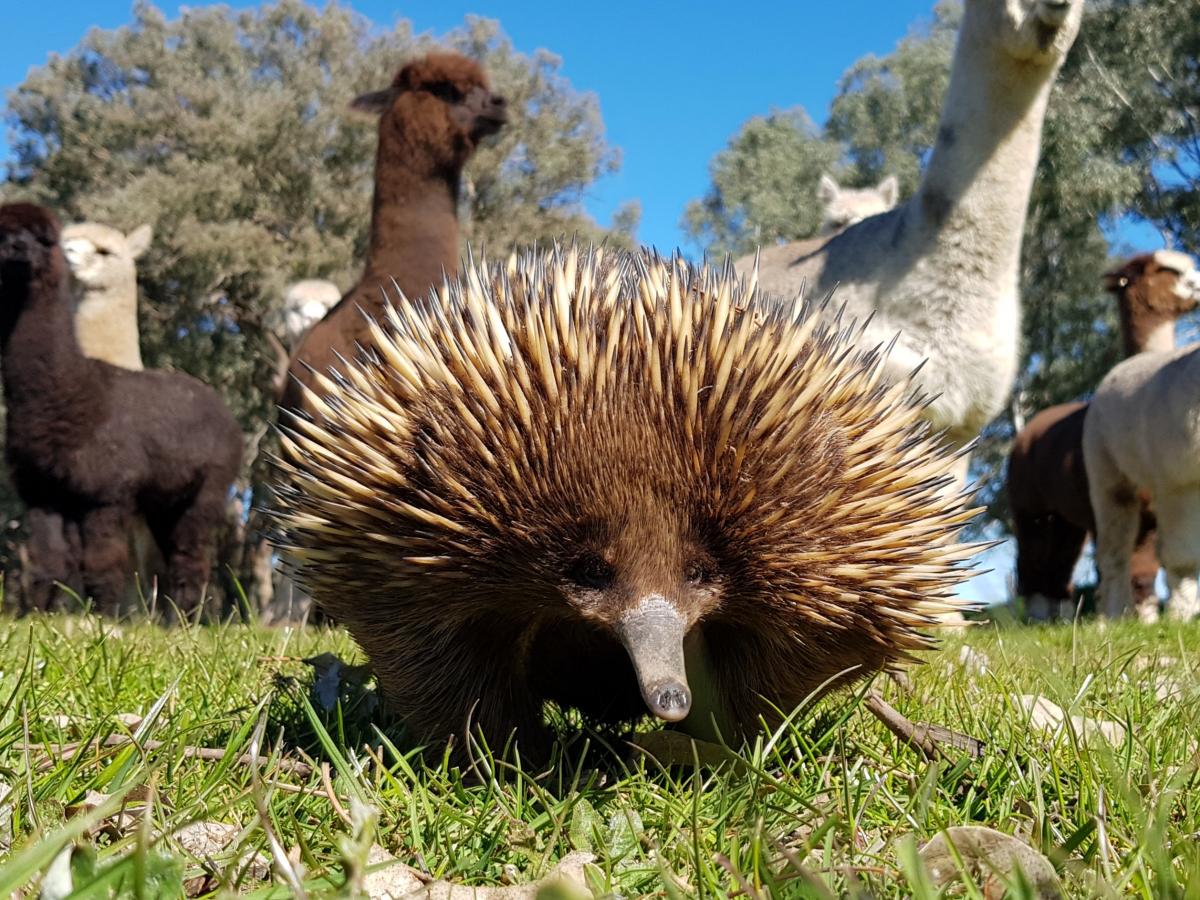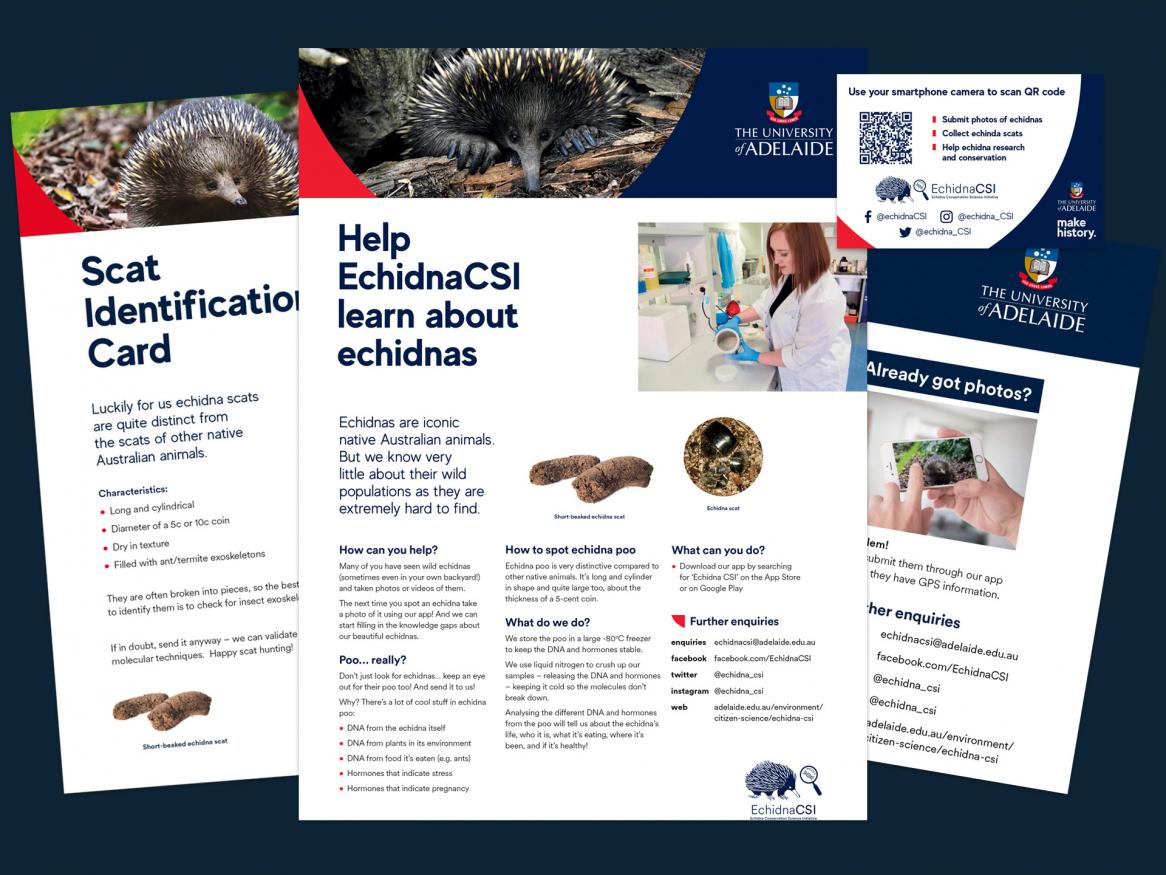Echidna CSI
Echidna CSI researchers want to learn more about echidnas - where they are, what they are doing and if they are healthy.
How can you help? By taking photos and collecting echidna poo!
So far, we have collected data from more than 13,000 wild echidna sightings across Australia. More than 700 samples of echidna poo have been sent to us for analysis.
Download the app
You are able to capture new echidna sightings and record your scat collections! Download either the BioCollect or iNaturalist app on the App Store or Google Play and get busy!

Send us snaps
Although an iconic native Australian animal, echidnas are extremely hard to find when you’re looking for them.
However, we know that there are many of you that have seen wild echidnas and taken photos or videos of them. Sometimes they pop up in your own backyard!
We don’t know much about the wild populations of echidnas. If you can send us photos of any echidnas you see, we can start filling in the gaps about wild echidnas in Australia.
-
What do I do if I find a dead echidna?
- As molecular biologists, the tissue from deceased echidnas is very useful for our research. If you happen to come across one that appears fresh, please contact us.
- If you can collect the echidna safely - be careful if on a road - it is best to place it in a fridge or cool place if possible, please do not freeze the echidna.
- If in South Australia we can then organise drop off/collection of the animal. If interstate please contact us for more details.

Post us some poo
Echidna poo is known as a 'scat'. We can learn a lot of information about echidnas by analysing the molecules in their scats.
We can extract DNA and hormones to tell us about the echidna, and whether it’s healthy, stressed or reproductively active. It helps us learn more about wild echidnas without having to track or capture them.
-
How do I identify an echidna scat?
- Echidna scats are quite distinguishable. Their long and thick shape, as well as their dry texture, make them unique from the small, pellet-like scats of other animals.
- You also should be able to spot lots of ants in echidna scats as this is what they eat. Take a look at the figures below that show you what an echidna scat looks like and how they compare to other native animals.
- If you want a handy scat identification guide for on-the-go use, we've created a guide for you to use.
Frequently asked questions
If you are still having problems after reading these FAQ, please send us an email at echidnacsi@adelaide.edu.au with your problem and we'll do our best to help.
-
Photo submission
- I would like to submit a photo from my library.
If you would like to submit your photo to us, you can do so through our BioCollect page.
- Can I submit photos of diggings/other evidence of echidnas?
We are interested in this data and ask that you submit these sightings to us through our BioCollect page. Please select the “other evidence of echidnas” survey while submitting.
- What if I saw an echidna but didn’t manage to take a photo?
We understand that getting a photos of echidnas isn’t always easy. As such, we have set up a portal for these kinds of sightings. Head to our BioCollect page and submit your sighting through our “Other evidence of echidnas” survey.
- I would like to submit a photo from my library.
-
Sending us scats
- I need help identifying a scat/I want to know what echidna scats look like.
Please check out our handy scat identification guide.
- How do I send a scat to you?
Place the scat in a ziplock bag, making sure to write your name and date on the bag. Put the ziplock bag in an envelope, then mail it to us at:
Room 2.14 Molecular Life Sciences Building
University of Adelaide
Adelaide SA 5005
- I need help identifying a scat/I want to know what echidna scats look like.

Resources
If you would like a high resolution version of these files for printing, please email us.
